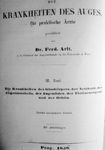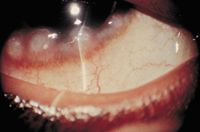Article
Conjunctival scarring found to be caused by trachoma
Editor's Note: In a recent column we covered lumps and bumps on the surface of the iris and some of the men associated with their descriptions (Ophthalmology Times, June 15, 2006). Now we turn our attention to some lumps and bumps discovered on the conjunctiva, the surface of the globe, and the lids; their pathology; and those individuals who are credited with the findings.

Herbert Herbert (1865-1942), a British ophthalmologist who received his medical degree from Leeds University, joined the Indian Medical Service and eventually attained the rank of lieutenant colonel.
From 1895 through 1907 he was stationed in Bombay, India where he worked at the eye hospital. During this time he had ample experience in examining and evaluating patients who had trachoma. Using his clinical skills and histopathology, he described the "pits" or scars left by limbal follicles that many consider pathognomonic of trachoma. These pits have been called and are referred to as "Herbert's pits."

Carl Ferdinand Arlt (1812-1887), an ophthalmologist trained in Prague, served as the chairman of ophthalmology at the University of Prague from 1849 through 1856 after the death of his mentor Johann Nepomunk Fischer (1777-1847). From Prague, Arlt left to become the chairman of the department of ophthalmology at Vienna from 1856 through 1883. At this time Vienna was the primary academic training ground for the finest ophthalmologists in the world. Arlt wrote a classic textbook of ophthalmology, which was produced in three volumes from 1859 to 1863.

Alexis Trantas (1867-1961) was a Greek ophthalmologist who received his medical degree in Athens in 1891. He then studied ophthalmology in Paris and in 1910 described the small chalky concretions found in vernal conjunctivitis that now bear his name, "Trantas spots."
Newsletter
Don’t miss out—get Ophthalmology Times updates on the latest clinical advancements and expert interviews, straight to your inbox.




